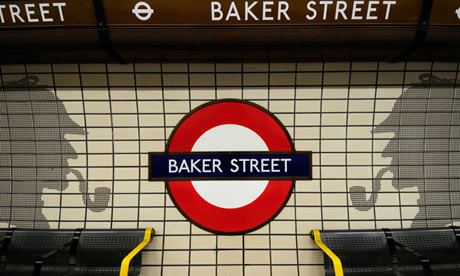A version of this article appeared in The Star Editor’s Choice.

If you are in London, and visit the Baker Street Underground station, you will notice next to the Baker Street roundel several silhouettes of a man’s head. The man is wearing a deerstalker hat and appears to be smoking a pipe. The silhouette is unmistakably that of Sherlock Holmes, the fictional detective created by writer Arthur Conan Doyle, who wrote the stories at the end of the 19th century and early 20th century.
You do not need to have read any of the Sherlock Holmes stories, or watched any of the different interpretations on television or on the silver screen to know the significance of Baker Street. You should know that 221B, Baker Street is where Sherlock Holmes was supposed to have lived, renting his residence from Mrs Hudson, his landlady.
Yes, Sherlock Holmes is a fictional character, but that did not stop the Transport for London, the local government authority responsible for public transportation in Greater London, from celebrating him. Outside of station, there is a statue of the detective to commemorate him. Sherlock Holmes is very much part of British culture and the local government acknowledges this.
When we speak of culture, we tend to immediately think of our ethnic and traditional cultures. Our makyongs, our cheongsams and our Hari Gawais.
When we say Malaysia is multi-cultural, we think of culture shaped within the racial sphere. ‘Culture’ is something that is supposed to define us ethnically, the different segments of our society.
But culture is wider than that. Pop culture is culture. Contemporary culture is culture. Music is culture; zapin is as much culture as the lyrics of M. Nasir. Local internet meme is culture. The way we speak, the ‘lah‘, the ‘rakyat‘ and the ‘lepak‘ (apparently, now a proper English word), is part of our linguistic culture.
That is why the British celebrate Sherlock Holmes as much as they celebrate the beefeaters at the Tower of London. In the UK, childhood homes of John Lennon and Paul McCartney are preserved. Houses in London where semi-famous people have lived bear small plaques to commemorate their former residents. Monuments are erected to immortalise poets, artists and writers, not just politicians and monarchs. Even Liverpool Football Club is celebrated as part of the culture of the city of Liverpool.
Imagine this; you step out of Pasar Seni LRT station. A huge billboard is before you, the words on the billboard are excerpts from Hikayat Faridah Hanom, the seminal novel written by Syed Syeikh al-Hadi. You have never read the book, but the words intrigue you. You make a mental note to find the book and read it.
How about lyrics from the song ‘Chow Kit Road‘ sung by the late Sudirman Hj Arshad at a Monorail station?
Or an excerpt from ‘Sulalatus Salatin’ at a KTM Komuter station?
Or a collage of the works by cartoonist Lat at KL Sentral, perhaps?
From the makeshift stage of spoken word performers, to the grand trappings of Istana Budaya, from the viral videos of ‘That Effing Show’ to the epic spectacle of KRU Production’s ‘Hikayat Merong Mahawangsa’, from Siti Nurhaliza to Petak Daud; culture is around us.
To discriminate against certain forms of culture would mean that we ignore parts of what makes us Malaysians. We will lose out if we only uphold the mainstream as ‘culture’, ignoring the rest. Nor should we allow the State to decide for us what culture should be.
It is time we rethink what ‘culture’ is supposed to mean to us and look beyond what has been traditionally defined as ‘culture’.
It is time that we celebrate the richness of our culture to its fullest.

Benedict Cumberbatch is awesome as Sherlock!!!
Yes, don't forget empat nombor ekor and the paper lama man.
Benedict Cumberbatch is awesome as Sherlock!!!
hehhh you forgot P. Ramlee :-D
also nasi lemak.
and the kavadi.
and the 3-D outlets LOLOLOL….
Nice!